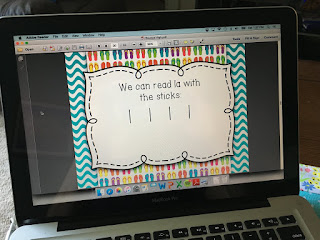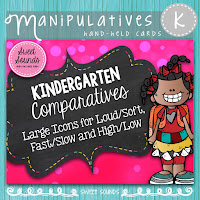There are many things that go into organizing a musical endeavor and I'm going to share a few of the things I've learned this year! This will be a series, so stay tuned for more posts! (Check out part 2 here!)
Picking a Musical
First, consider the amount of time you are willing to spend in class, plus the amount of time you are allowed to spend outside of class. I didn't want the 16 songs to be the *only* music my students interacted with for the year, so I limited the amount of time to seven weeks.
Because there are two performing arts teachers, we can divide and conquer! First we did several music-only rehearsals in which we combined classes. Then she took the character roles during class time to work on blocking, while I worked with the large group on chorus songs. This allowed us to progress further on the songs while not falling behind on blocking, and ultimately get more done in the seven weeks allotted.
We did not want kids to have to "sit and watch" any longer than absolutely necessary. We had our first "full grade level" rehearsal about ten days before our first performance. After about five weeks of working on songs/blocking separately, we were able to put them together.
Second, evaluate the ability level of your students. Do you have a strong lead? enough students to fill out the major roles? enough boys/girls to fill out gender specific roles? do you have enough chorus members to do a dance number or would standing on the sides be a better fit?
Third, take the climate of the school into account. You don't want to do a super serious musical for their very first musical experience. In my current school, they have a tradition of performing musicals. We wanted to keep that tradition alive and push it forward by adding tech and incorporating more action for the chorus members.
We chose AristoCats and 101 Dalmatians based on what we thought our students could handle in the amount of time allotted.
Parent Communication
We sent home a large packet of information two months before the performances. In this packet, we included all kinds of information.
"The Packet"
- Cover Letter with contact information
- Calendar with every rehearsal & performance date
- Glossary page (description of each rehearsal & who was required to attend)
- Student/Parent Contract (including permission to stay after school & permission to publish pictures in the school publications)
- Student Bio form - for the playbill
- T-shirt order form
- Personal Ads order form (Parents can purchase a small space in the program to cheer on their student)
- Character descriptions & audition information
- Makeup and costume requirements for chorus members
- Parent check list* (a timeline of sorts for parents to keep them on track)
*We just added this for the latest program - great response!
Even though we sent home tons of information on paper, we also posted this packet on the drama blog and encouraged every parent to subscribe to our Remind Text.
Character Analysis
Before auditions, I did a quick analysis of the singing solos for each character, so that I had a general idea of the number and type of solos they would be required to do. The drama teacher did a quick tally of the number of lines for each character as well.
There are also character descriptions in the director's manual of our chosen shows, so we looked over the range and type of character that was suggested. (We got our shows from MTI.)
Two days prior to auditions, we held a workshop in the evening. We invited parents of students that wanted to audition for a character role to meet with the drama teacher while I taught them the audition songs. This is a great time to solicit volunteers for things like backstage help during dress rehearsals & performances, help making costumes, donating makeup and other items for props, etc. After explaining the audition process and answering parent questions (and encouraging them to sign up for the Remind Text!) the parents joined the students in the music room.
After distributing the scenes to memorize, we had a brief question and answer session, followed by a "meet and greet" time. This was a great chance for us to meet some parents (it's both of our first years at our school) and answer tons of questions ahead of time.
Auditions
The auditions themselves were pretty straightforward. I used the students' aural assessment scores from music class as a base line. They earn a score of 3 - match pitch, 2 - almost or 1 - not yet. This gives me a baseline to go back to, in case a student has a case of nerves during an audition, or if there is a tie.
The students had to memorize segments from two of the songs in the show, as well as memorize (and add character to!) one scene. We chose music clips from what was available for them to listen online, for at-home practice.
When they come in for auditions, they stand by themselves in front of the judge table to sing their song (with CD accompaniment track) & perform their scene. Then, we ask them to do a cold read for another character, using the script for a different scene.
And lastly, if we have any questions, we have them do a movement audition. We don't go over this at the workshop, because they have been working on movement and characterization all year in drama specials. We just say, "If you were an army cat, move across the floor like they would," or "Move across the floor like an old country dog." This gives us another level of information about the students' abilities.
Casting / Double Cast
We decided to double cast our show for several reasons. We have a large school with around 150 students in each grade level, so we wanted to have plenty of opportunities for students to be involved. We also know (from our specials teammates that have been here many years) that many of the students will be a "no-show" at the performance night. It also was very helpful to have a built-in understudy for each role, in case of illness or other mishap.
We had a few students sign up to perform in "all 4" shows, so those were the only roles that did not get double cast.
This sounds like a ton of work - and it is! But it is worth it in the end when the students put on a spectacular show!
Watch Facebook for the next in the series - rehearsals and Tech Day! <-- Click here for Part 2!
Let’s Connect!































